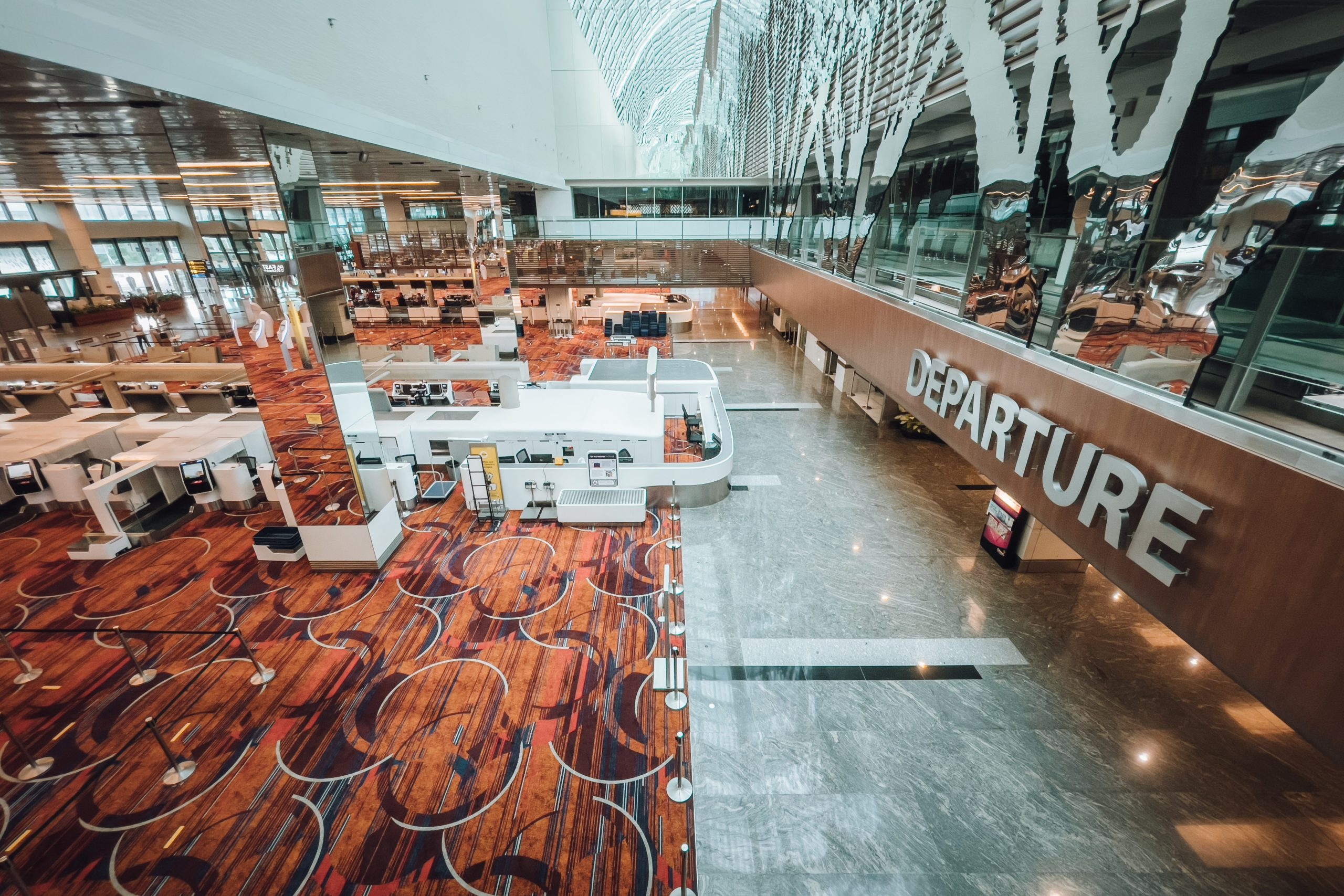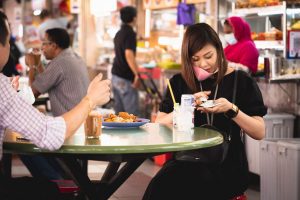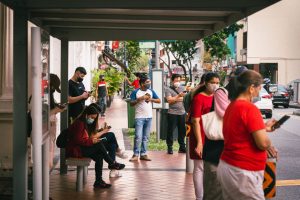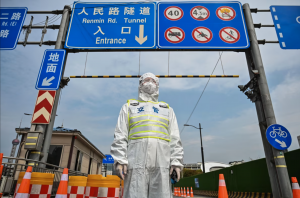Top Image: shawnanggg/Unsplash
“And so when it (the VTLs) was officially announced, I was just really, really happy to hear that. I was one of those people who straight away went to the SQ website, trying to find a slot,” laughs Catherine Ho* a little sheepishly at her Singaporean sensibilities as she recounts her VTL experience to Australia during the recent December holidays.
The fervour was palpable, so much so that the Singapore Airlines website crashed, given everyone’s enthusiasm to don the traveller hat once again.
The announcement of the Vaccinated Travel Lanes (VTLs) signalled many things. For one, it was a lifeline for the aviation industry, which has been in the trenches since the onset of the pandemic. With borders opening up, it also meant that economies were on track for recovery and even possible growth.
More than that, the VTLs are an indication of Singapore’s strong bilateral relations. The VTLs also meant that families that have been apart for close to two years (and counting) could be reunited. Additionally, it heralded a ‘new normal’ where travel would be seen as unexceptional and commonplace as it once was.
Naturally, there has been a lot of adulation and praise for the VTLs, and in many ways, they are warranted. However, the actual experience of using these VTLs is not as smooth as one would think.

2019 travel v.s 2020 travel
Travelling has now become an even more expensive endeavour than before. For example, a VTL ticket to Sydney would set you back about S$1,900, excluding testing, travel insurance, and accommodation.
A quick glance at this 2019 Skyscanner page feels like a different world altogether. Here, flights start from an affordable S$368 for Sydney, while a trip to Hong Kong can be bought for as low as S$184.
It is also worthy to note that whatever the purpose of your flight, the cost of a VTL is the same.
Travel has also manifested new anxieties around the reality of a pandemic, making going overseas a rather tense situation.
Furthermore, given the possibility of contracting Covid-19 on one’s travels, we have to consider that travel has become an even more privileged undertaking. Not everyone can afford the time, money, or work-from-home opportunities to take a trip with the VTLs. The VTLs then pose as an inadvertent divider between the haves and have-nots in society and seek to deepen these faultlines.
While it is difficult to admit, the VTLs demand a more critical examination and perhaps taken off the pedestal we have so readily put them on.
To understand the complexities brought upon by VTL travel, we first have to know the kind of travellers who frequent the VTLs. Broadly speaking, we would see two types of travellers: those going to visit family or relatives and those travelling for leisure.
It is crucial to make this distinction as these two sets of travellers have different priorities and intentions. While they might have taken the same flights and PCR tests on their way to visit family or a vacation, their experiences run the gamut with a few bumps along the way.
The cost of testing and more testing
The catch with the VTLs is the sheer cost of testing. Apart from the actual price of the ticket, the various PCR and ART tests required by Singapore and the country you’re visiting do add up.
Zachary Tang, 29, a photographer, travelled to Malaysia with his mother via the air VTL to visit family. For him, the total cost of testing per person came up to a steep S$624.50. He gave us a comprehensive itemisation for each of his tests to understand how it reached this figure.
A pre-departure PCR test in Singapore was S$107, while his on-arrival PCR test in Kuala Lumpur was S$117.50. You have to self-administer the ART test on days 2, 4, and 6, costing S$15 each.
Following that, the clinically-administered ART tests were conducted on day 3 and day 5; that was S$140 and S$5, respectively. Zach explains the S$140 for day 3 was because he did the test at the clinic, which was more expensive.
Later, he found out that an app named CLEA allowed you to submit the test online that was verified by doctors. Thereafter, the ART test on day 7 is only S$5. When leaving Kuala Lumpur, the pre-departure PCR test is S$80, and the on-arrival PCR test in Singapore is S$125.
For Megan Khaw, a 24-year-old social media specialist, her tests amounted to roughly S$600 for her trip to Korea. Her pre-departure and on-arrival PCR tests amounted to S$242. Just like Zachary, her self-administered ART tests on days 2, 3, 4 and 5 cost S$5 each. There was also her supervised ART on days 3 and 7 at the cost of S$15 each. Lastly, her Day 6 and 7 pre-departure PCR test was conducted at S$125 and another S$125 on-arrival PCR test in Singapore.
Not only do the costs of all these tests add up, keeping track of them and making sure you do them correctly is another thing to be mindful of.
“We were definitely uncomfortable with the costs. It puts a little bit of a damper on our spirits before the trip as there was so much documentation to prepare, but overall, it was still something I knew I was willing to bear,” says Zachary.
“Testing was a true pain and was quite a big cause of concern for my mum,” he continues. “I actually asked her a few days before the trip, if she knew about all of these tests and costs to be incurred, would she still have wanted to go?”
Zachary tells us that his mother said no at the time, given the laundry list of tests. However, as she hasn’t seen her family in Taiping for over two years, Zachary’s mother went through with them anyway.
For Megan, the initial news of the exorbitant cost did cause some friction with her parents. However, for her, it was money well spent.
“I was also willing to bear this cost as I knew that I needed a break. I mean, we’re living in a pandemic; everyone needs a break,” Megan explains. “I decided to be kind to myself and treat myself to a holiday. Honestly, I’m just thankful and privileged enough to be able to be in this position.”
While Zachary and Megan had their gripes on the expensive tests, ultimately, they went ahead anyway. It’s no secret that travel has always been a luxury, but the barrier for entry before the pandemic was relatively attainable.
Pre-pandemic, there were a wide variety of choices of flights and airlines to fit budgets of all kinds. Now, the options are limited, and tickets are a little pricier. If you throw in the additional costs of all these tests, choosing to travel sets you back quite considerably, and not everyone is afforded that opportunity.
Despite saving a small nest egg during the pandemic, Kim Gan, a 24-year-old economics student at Durham University, felt travel was still too much of an expense.
“As much as I wanted to travel, I felt that it was not worth it anyway and decided on not travelling in the end. Although I saved up a lot of money during the pandemic, I don’t want to spend even more on just one trip.”
More than small inheritance that one has to fork out to travel via VTL, another critical factor that is overlooked is the unpredictability of Covid-19 and the newfound anxiety associated with travel that was never there before.
Where the rules change all the time
One of the distinct qualities of living in a pandemic is being amenable to sudden and unexpected changes. Social gathering groups can increase from two people to four people in the course of a couple of weeks or be reduced in a blink of an eye. With Covid-19, the rules shift all the time, and that experience is amplified more so with the VTLs.
With all this in mind, Catherine was quite apprehensive in the days leading up to her flight to Australia. Even though she was excited to see her family after almost two years, ensuring all her documents were in order was a stressful experience, to say the least.
“It came down to constant monitoring of the Internet just to gauge what the measures were. What are the rules? When do you have to test, and how many tests do we need to do? And then there’s all the paperwork you need to prepare in order to check into the flight.”
“I think we’re lucky that we weren’t travelling with babies or young kids,” mused Catherine. As with most countries, they require you to get various ART and PCR tests done on different days, depending on the length of your stay. It sounds relatively straightforward, but the devil is in the details.
Megan described the various testing processes as “extremely confusing to plan out”. Despite the multitude of articles and information about travelling in South Korea, “the rules are always changing”. The only solution is to keep up to date with the news as much as possible.

The sudden letdown of VTLs
Not only are travellers at the behest of fluctuating rules, but they are sometimes at the mercy of technical glitches. On 12 January 2022, a sudden technical error resulted in the forms on Transtar Travel’s Shopee homepage to freeze, thereby causing many land VTL tickets to be cancelled.
40-year-old Lee Eng Hua was one such customer. The Malaysian works as a salesperson in the healthcare industry and uses the VTLs to visit his wife and children in Johor Bahru.
At the announcement of the launch of land VTLs, Eng Hua was relieved and elated. “The VTL land initiative doesn’t require a quarantine order in both countries which saves on the quarantine cost at the hotel. Moreover, I don’t need to apply for more annual leave or unpaid leave to visit my family”, he says.
Eng Hua explains that since he is the sole breadwinner of his family with two young children and elderly parents, the quarantine cost of a hotel at S$150 a night in Singapore and RM150 a night in Malaysia is an expense that he would rather save.

Still, procuring these tickets is a somewhat convoluted process. There are two ways you can go about it; the first is through Transtar Travel’s website, and if that doesn’t work, most people will purchase tickets through their platform on Shopee.
After two weeks of camping out on Transtar Travel’s website and to no avail, Eng Hua finally secured two tickets for a trip on 12 January 2022 for Johor Bahru on Transtar Travel’s Shopee page.
It was a small triumph given the massive demand for these land VTL tickets. All 6,480 tickets for the first six days of February sold by Malaysian bus operator Causeway Link were sold out within hours.
This joy, however, was short-lived as Shopee cancelled his tickets due to a technical glitch. It was disheartening for Eng Hua, who had meticulously planned out his dates such that he could serve the 7-day quarantine in Malaysia at home to celebrate Chinese New Year with his wife and young children.
Since land VTL tickets are snapped up so fervently, Eng Hua has not been able to get another ticket for the entire month of February. “Both countries should increase the VTL quota or allow more bus companies to offer VTL bus services,” he suggests.
The VTLs indeed provided a source of hope for people eager to reunite with their families. However, given how unpredictable Covid-19 is, there is also this sense of helplessness and emotional turmoil the VTLs have also caused.
Perhaps, these are just teething problems to be expected as we traverse the ‘new normal’, but one can’t help thinking of all that is lost due to a glitch, a missing form or document.
The cost of catching Covid-19
With the emergence of the VTLs, there is also an undercurrent of privilege that often goes unacknowledged.
Besides the exorbitant and complicated testing procedure, the VTLs, despite their good intentions, have unwittingly widened the gulf between the rich and the poor. This is seen most prominently in the ability to work from home should you need to be isolated or, in the worst-case scenario, catch Covid-19.
It might seem second nature to so many of us as we have been relegated to working out of our laptops since the beginning of the pandemic. This means that if you catch the virus, you would still be able to carry on at home if your symptoms aren’t too severe. In this instance, the degree of disruption would be kept to a minimum.
That can be said for Zachary, where the thought of getting Covid-19 was not the most significant concern during his travels. This might also be because he had contracted the virus in October last year, and his mother had already received her booster.
More than that, in the event Zachary caught Covid-19 again, he would be able to easily work from home and isolate himself from his family members as well.
For Catherine, who holds an office job, getting Covid-19 would cause little disturbance to her work life. She was more worried about how catching the virus would make things difficult for her family in Australia.
There’s the accompanying guilt she would feel at causing inconvenience to her loved ones by being a close contact. These are definitely valid concerns and questions that would plague anybody.
Still, for Eng Hua, these worries are vastly different and intensified.
For starters, Eng Hua sells medical devices in hospitals that require him to be on-site. This means the work-from-home model does not apply to him. Naturally, hospitals would also have stringent requirements where he has to do a mandatory ART test before meeting clients.
“Any overseas travelling is discouraged, be it business or personal,” Eng Hua explains. “That’s why I was in a dilemma during the period I needed to travel back to Johor Bahru for my wife’s pregnancy and to take care of my parents who caught Covid-19,” he continues.
If Eng Hua catches the virus, he would probably be on hospitalisation leave and forced to undergo home quarantine. Even though the duration would only be for five to seven days, it is time that he cannot afford to be absent from work.
Eng Hua is currently the sole breadwinner of the family since his wife had to quit her job (where she was already receiving a pay cut of 33%) to take care of his young children. Any time off without wages is not feasible.
Indeed, for Eng Hua, the stakes are much higher and more severe; each meticulously planned out part of his work life hinges on a negative ART test. It is not a simple decision of changing his work environment. It involves reshuffling the family finances and creating feasible contingency plans.
“We have already cut down all the enrichment classes for my children and only spend on necessities.” Necessities here include budgeting for rental and expenses in Singapore and allocating a sum of money for incidentals such as the cost of possible quarantine and even the cost of treatment when his parents had Covid-19 last year.
For Eng Hua, catching Covid-19 was out of the question entirely.
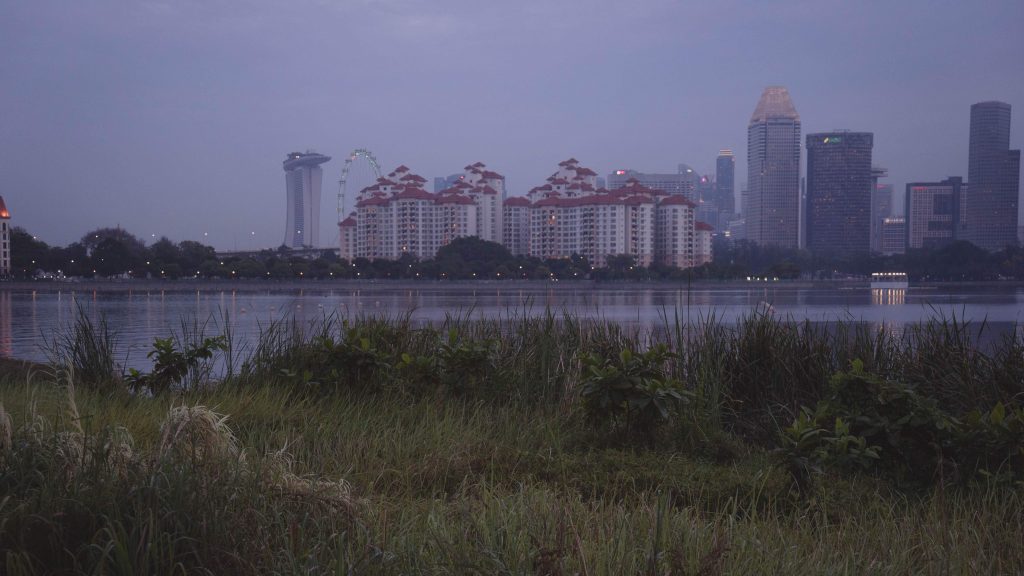
Thinking twice about travelling again
For those who have yet to use the VTLs, the question that comes up repeatedly would be: Is it worth it? After Catherine’s trip to Australia, given how so many things were out of her control, she’s not so quick to jump on the next flight out of here.
The same goes for Zachary; while he enjoyed his time with his family, he mentions it is “not an experience I’d recommend for worrywarts. They’d probably be too stressed out to have a good time”.
For individuals like Eng Hua and many others, even though the VTLs were thought of as a panacea for travelling between the borders at the beginning, they have caused so much heartache instead.
There is a lot to think about before embarking on these VTLs. The inherent unfairness of the VTLs needs to be adequately addressed and more equity provided for those who aren’t as privileged to travel as freely.
Maybe the way forward with the VTLs is to stop looking at them as quick fixes for just the economy and consider the emotional impact more carefully and thoughtfully.
“I think if you’re travelling, the last thing you want to do is to go to the hospital. Yeah, it’s a lot to think about. So, that’s why I said before you travel, you really have to think twice. What is the purpose of your trip? Do you really need to travel now?”
*Names have been changed to protect the privacy of profiles.

